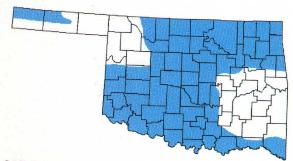Variable groundsnake
Sonora semiannulata semiannulata
Sonora semiannulata semiannulata
HARMLESS
Description:
As the common name suggests, the groundsnake's pattern is extremely variable. It may look like one of the following:
* Plain brown to orange-brown with no pattern
* Plain brown to orange-brown with a reddish-orange stripe running down the center of its back
* Plain brown to orange-brown with either a single neck band or with dark bands evenly spread down the length of its body
The scales are smooth and shiny, and the anal plate is divided.
Size:
Adults 8 - 15 inches (20 - 38 cm)
Prey:
Centipedes, scorpions, spiders, and small insects
Reproduction:
Mates in spring or fall. Lays up to 6 eggs in June to August depending on location. Eggs hatch in 7 - 10 weeks and babies are about 4 - 5 inches (10 - 13 cm) long.
Habitat:
Open areas with loose sandy soil, and rocky wooded or prairie hillsides
Other Information:
This snake is a very secretive burrower and is occasionally found under rocks and logs.
Why doesn't the range map show this species in my county?
Description:
As the common name suggests, the groundsnake's pattern is extremely variable. It may look like one of the following:
* Plain brown to orange-brown with no pattern
* Plain brown to orange-brown with a reddish-orange stripe running down the center of its back
* Plain brown to orange-brown with either a single neck band or with dark bands evenly spread down the length of its body
The scales are smooth and shiny, and the anal plate is divided.
Size:
Adults 8 - 15 inches (20 - 38 cm)
Prey:
Centipedes, scorpions, spiders, and small insects
Reproduction:
Mates in spring or fall. Lays up to 6 eggs in June to August depending on location. Eggs hatch in 7 - 10 weeks and babies are about 4 - 5 inches (10 - 13 cm) long.
Habitat:
Open areas with loose sandy soil, and rocky wooded or prairie hillsides
Other Information:
This snake is a very secretive burrower and is occasionally found under rocks and logs.
Why doesn't the range map show this species in my county?
